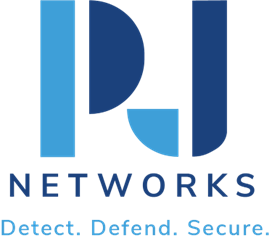Top 10 SIEM Best Practices Every Organization Should Follow
Hey there! Today, we’re diving into the world of SIEM best practices to ensure your organization’s security is top-notch. In a world where cybersecurity threats are constantly evolving, having a solid Security Information and Event Management (SIEM) system along with security enhancement strategies is crucial. Let’s talk about some essential cybersecurity tips and ways to achieve SIEM optimization that you can start implementing right away!
Introduction
We all know that protecting our organization’s data is paramount. But with threats getting more sophisticated, relying on basic measures just won’t cut it. This is where SIEM systems come into play. They aggregate and analyze security event data in real time, which helps organizations detect and respond to incidents efficiently. However, simply deploying a SIEM isn’t enough. We need to implement best practices to leverage its full potential. So, let’s explore the top 10 best practices for SIEM deployments!
Best Practice #1: Define Clear Objectives
Before diving in, it’s important to define what you want from your SIEM. Why are you implementing it in the first place? Maybe you want to:
- Detect threats faster
- Improve incident response times
- Comply with regulatory requirements
By clearly setting objectives, you’ll have a roadmap for your SIEM deployment. This clarity also ensures alignment among stakeholders and smooth implementation.
Best Practice #2: Regularly Update SIEM Systems
Just like you update your phone to get the latest features, your SIEM needs updates too! Regular updates ensure:
- Protection against the latest threats
- Access to the newest features
- Resolution of existing vulnerabilities
Don’t delay updates. It keeps your security posture robust and effective against emerging threats. Set a schedule for regular updates and stick to it!
Best Practice #3: Prioritize Data Sources
Not all data is created equal. Identify the most critical data sources for your organization. Focus on:
- The sources that provide the most valuable insights
- Log data that is relevant to your objectives
This reduces noise and helps your SIEM work efficiently by concentrating on what’s crucial to your security goals.
Best Practice #4: Optimize Event Correlation Rules
The power of your SIEM lies in its ability to recognize patterns. By customizing and fine-tuning event correlation rules, you can:
- Detect anomalies effectively
- Minimize false positives
- Gain deeper insights into suspicious activities
Regularly revisit these rules to ensure they are aligned with current threat landscapes and organizational changes.
Best Practice #5: Implement Real-Time Monitoring
When it comes to security, timing is everything. Real-time monitoring:
- Enables swift threat detection and response
- Reduces the window of opportunity for attackers
Evaluate your alerting mechanisms and ensure any oddities are immediately flagged. The faster the detection, the better the protection!
Best Practice #6: Conduct Regular Threat Intelligence Updates
Threats evolve constantly. Keep your SIEM up-to-date by:
- Incorporating the latest threat intelligence feeds
- Leveraging insights from peer organizations
Doing this ensures your SIEM can anticipate and mitigate upcoming threats effectively.
Best Practice #7: Foster Cross-Department Collaboration
Security isn’t solely the job of IT. Encourage collaboration between departments:
- Foster a security-focused culture
- Tap into diverse insights and expertise
IT, HR, compliance – all have unique perspectives on potential vulnerabilities. A unified approach strengthens your security posture overall.
Best Practice #8: Establish Incident Response Processes
Preparation is key. You need a solid incident response plan including:
- Clear steps to follow in the event of a breach
- Defined roles and responsibilities
Regularly test and refine your incident response plan to ensure everyone knows exactly what to do when the unexpected occurs.
Best Practice #9: Measure and Optimize Performance
Are your SIEM goals being met? Regularly assess the performance of your SIEM system:
- Track KPIs and other relevant metrics
- Identify areas for improvement
Use these insights to fine-tune your SIEM deployment. Continuous optimization means ongoing security enhancement.
Best Practice #10: Continuous Training and Education
The cybersecurity landscape is ever-changing, as are the capabilities of your SIEM. Invest in continuous training:
- Keep your team informed about the latest SIEM updates and features
- Educate them on emerging threats and attack techniques
Empowered employees are your first line of defense against threats and instrumental in maintaining a secure environment.
Conclusion
And there you have it, folks! With these best practices, you not only ensure your SIEM system works at its best, but also boost the overall security posture of your organization. Remember, security is not a “set it and forget it” task. It’s continuous, evolving work that demands our attention and effort. By defining clear objectives, updating systems, prioritizing key data, monitoring in real-time, collaborating across departments, and fostering education & training, we enhance our defenses and stay resilient against threats. Keep these tips handy, apply them smartly, and watch your organization thrive in cybersecurity excellence. Let’s make cybersecurity a proactive journey together through consistent SIEM optimization!
Stay safe out there while practicing these SIEM best practices and fortifying your security enhancement efforts boldly with well-informed cybersecurity tips!
